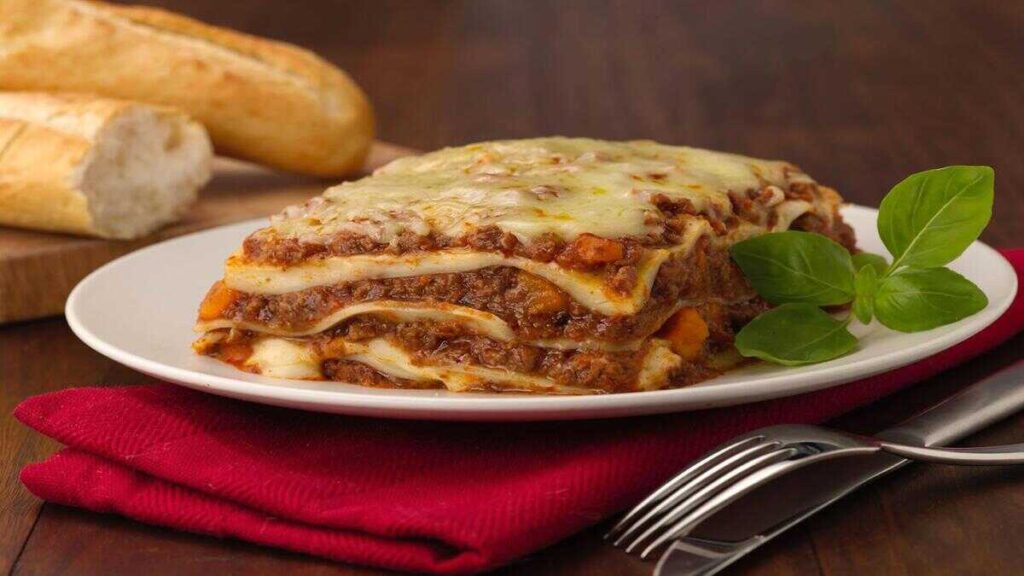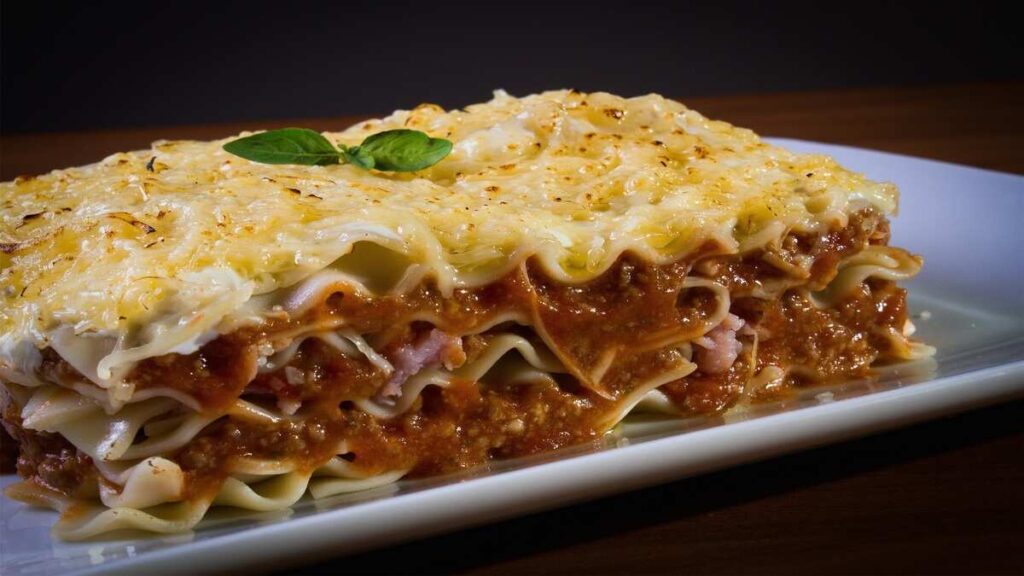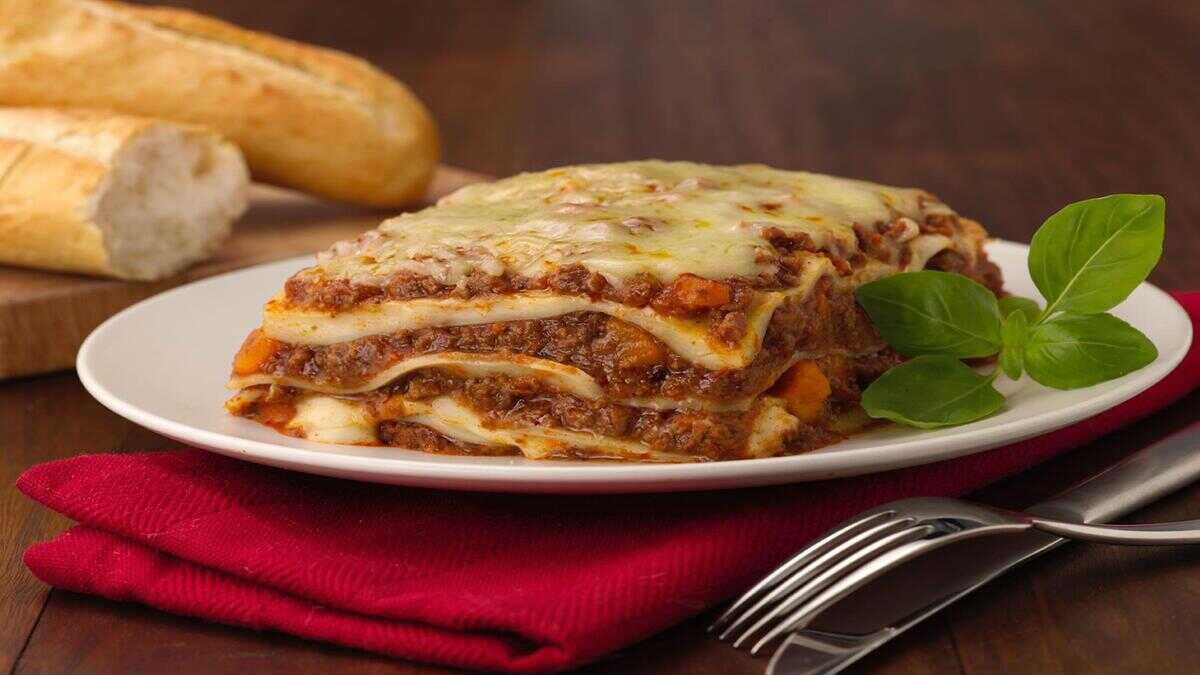When you think of lasagna, you probably envision a hearty, cheesy dish packed with rich flavors and layers of meaty sauce. But what if I told you that you could enjoy all of those comforting elements in a vegetarian version that’s equally satisfying and delicious? Vegetarian Lasagna Recipe is the perfect alternative for those who want to enjoy this classic dish without meat. Whether you’re a committed vegetarian or simply looking to add more plant-based meals to your diet, this dish is versatile, healthy, and perfect for feeding a crowd. Let’s dive into the world of vegetarian lasagna, from its origins to a step-by-step guide on how to make it yourself!
What is Vegetarian Lasagna Recipe?
Vegetarian Lasagna Recipe is a variation of the traditional Italian lasagna dish, but instead of using ground beef, pork, or other meats, it incorporates vegetables, plant-based proteins, and cheese. The core concept remains the same—layers of pasta, filling, sauce, and cheese, but with a plant-based twist.
Common vegetables used in vegetarian lasagna include zucchini, spinach, mushrooms, bell peppers, and eggplant. To replace the richness of meat, ingredients like ricotta, mozzarella, Parmesan cheese, and even tofu or lentils are often used. The result is a dish that’s just as indulgent and flavorful, minus the meat.
The Origins of Vegetarian Lasagna Recipe

The history of lasagna dates back to ancient Greece, where a dish called “Laganon” was made by layering sheets of dough with sauce. However, the lasagna we know today is undeniably Italian. Its roots can be traced back to the region of Emilia-Romagna in northern Italy, where layers of pasta were traditionally combined with ragù (meat sauce) and béchamel sauce.
As time went on, different regions of Italy put their own spin on the dish, adding variations like seafood, vegetables, and different cheeses. In modern times, lasagna has become a popular comfort food around the world, with countless variations, including vegetarian versions that use plant-based ingredients.
Key Ingredients for Vegetarian Lasagna Recipe
Making Vegetarian Lasagna Recipe is all about selecting the right ingredients to create a flavorful and balanced dish. Here’s a breakdown of the key ingredients:
- Lasagna noodles – You can either use traditional wheat pasta or opt for gluten-free lasagna noodles.
- Ricotta cheese – A creamy base for the lasagna that pairs perfectly with vegetables.
- Mozzarella cheese – Fresh mozzarella gives the lasagna a rich and gooey texture.
- Parmesan cheese – Adds a sharp, nutty flavor that elevates the dish.
- Tomato sauce – A simple marinara or marinara with garlic, herbs, and vegetables provides a rich, savory flavor.
- Vegetables – Zucchini, mushrooms, spinach, eggplant, and bell peppers are great options, but you can mix and match based on your preferences.
- Herbs and spices – Basil, oregano, thyme, and garlic are essential for seasoning the dish.
- Olive oil – Used for sautéing vegetables and creating a smooth, flavorful sauce.
Equipment Needed
Making vegetarian lasagna at home requires some basic kitchen equipment. Here’s a list of what you’ll need:
- Large pot – For boiling lasagna noodles.
- Large skillet or pan – To sauté vegetables and prepare the sauce.
- Casserole dish – A deep baking dish to layer and bake your lasagna.
- Mixing bowls – For combining cheese and other ingredients.
- Spoon or spatula – To spread out layers and stir the filling.
Step-by-Step Preparation
Let’s get into the fun part—cooking! Follow this easy guide to make your own mouth-watering vegetarian lasagna.
Step 1: Prepare the Vegetables
Start by washing and slicing your vegetables. You’ll want to sauté them lightly in olive oil to release their flavors and soften them before layering them into the lasagna. For example, sauté zucchini, mushrooms, and bell peppers in a large pan with garlic and olive oil until tender. You can also use spinach, which will wilt down nicely in the pan.
Step 2: Make the Tomato Sauce
In a separate pot, heat olive oil and sauté chopped onions and garlic until soft. Add canned crushed tomatoes, tomato paste, and a few tablespoons of tomato sauce. Season with herbs like basil, oregano, and thyme, and let the sauce simmer for about 15 minutes to let the flavors meld.
Step 3: Prepare the Cheese Mixture
In a mixing bowl, combine ricotta cheese, egg (optional), and a bit of salt and pepper. You can also add some finely grated Parmesan for extra flavor. Mix until the ricotta is smooth and creamy. This will be your lasagna’s creamy filling.
Step 4: Layer the Lasagna
Preheat the oven to 375°F (190°C). In your casserole dish, spread a thin layer of tomato sauce at the bottom. Place a layer of cooked lasagna noodles over the sauce, followed by a layer of sautéed vegetables, cheese mixture, and more sauce. Repeat the layering process, making sure the top layer is covered with mozzarella cheese. Add extra Parmesan on top if you like a bit of crunch.
Step 5: Bake
Cover the casserole dish with aluminum foil and bake for about 25-30 minutes. Then remove the foil and bake for an additional 10-15 minutes, or until the cheese is bubbly and golden brown. Let the lasagna cool for a few minutes before serving.

Health Benefits of Vegetarian Vegetarian Lasagna Recipe
Vegetarian Lasagna Recipe offers several health benefits, making it a great option for those looking to eat more plant-based meals without compromising on flavor.
- High in Fiber: Vegetables like spinach, zucchini, and eggplant provide a good amount of fiber, which aids digestion and promotes gut health.
- Rich in Nutrients: This dish is packed with vitamins and minerals such as vitamin A, vitamin C, calcium, and iron, which are crucial for overall health.
- Lower in Calories: By using vegetables instead of meat, vegetarian lasagna tends to be lower in calories and saturated fat, making it a lighter alternative to traditional lasagna.
- Plant-Based Protein: Ingredients like ricotta, mozzarella, and even lentils or tofu can provide plant-based protein, which is essential for muscle growth and repair.
Additional Information: Customizing Your Vegetarian Lasagna Recipe
One of the best things about vegetarian lasagna is how adaptable it is. You can swap out ingredients to suit your dietary needs. For a vegan version, simply use plant-based ricotta, mozzarella, and egg alternatives. If you’re looking to add extra protein, consider adding lentils or crumbled tempeh.
Best Way to Serve Vegetarian Lasagna Recipe
Vegetarian Lasagna Recipe is a hearty and filling meal on its own, but it’s great when served with a simple side salad or some garlic bread. A fresh green salad with a light vinaigrette helps balance the richness of the lasagna.
Calories, Prep Time, and Cook Time
- Calories: A serving of vegetarian lasagna (about 1/8 of the dish) contains roughly 350-400 calories, depending on the specific ingredients used.
- Prep Time: 20-30 minutes.
- Cook Time: 45-60 minutes.
Conclusion
Vegetarian Lasagna Recipe is a delightful and nourishing alternative to traditional lasagna. It’s packed with flavor, rich in nutrients, and incredibly versatile. Whether you’re a vegetarian or just looking for a healthier twist on a comfort food classic, this dish is sure to satisfy your cravings.
By incorporating fresh vegetables, plant-based proteins, and plenty of cheese, you can create a lasagna that rivals the original. Plus, it’s a fantastic way to feed a crowd or prepare a meal ahead of time. So why not give it a try? You might just discover your new favorite lasagna recipe!
FAQs
- Can I make Vegetarian Lasagna Recipe in advance? Yes, you can prepare vegetarian lasagna ahead of time and refrigerate it. Simply bake it as directed, and then reheat when ready to serve.
- Can I freeze Vegetarian Lasagna Recipe? Absolutely! You can freeze it before baking. Just cover the dish tightly with plastic wrap and foil, and store it in the freezer for up to 3 months.
- What other vegetables can I use in vegetarian lasagna? You can experiment with a variety of vegetables like carrots, butternut squash, kale, or even cauliflower for different flavors and textures.
- Can I make this dish gluten-free? Yes, simply use gluten-free lasagna noodles to make the dish suitable for gluten-sensitive individuals.
| Ingredient | Amount |
| Lasagna noodles | 12 sheets |
| Ricotta cheese | 2 cups |
| Mozzarella cheese | 2 cups |
| Parmesan cheese | 1/2 cup |
| Tomato sauce | 4 cups |
| Zucchini (sliced) | 1 medium |
| Mushrooms (sliced) | 1 cup |
| Spinach (fresh) | 2 cups |
| Bell pepper (sliced) | 1 large |
| Garlic (minced) | 3 cloves |
| Olive oil | 2 tablespoons |
| Herbs and spices | 1 teaspoon each |
